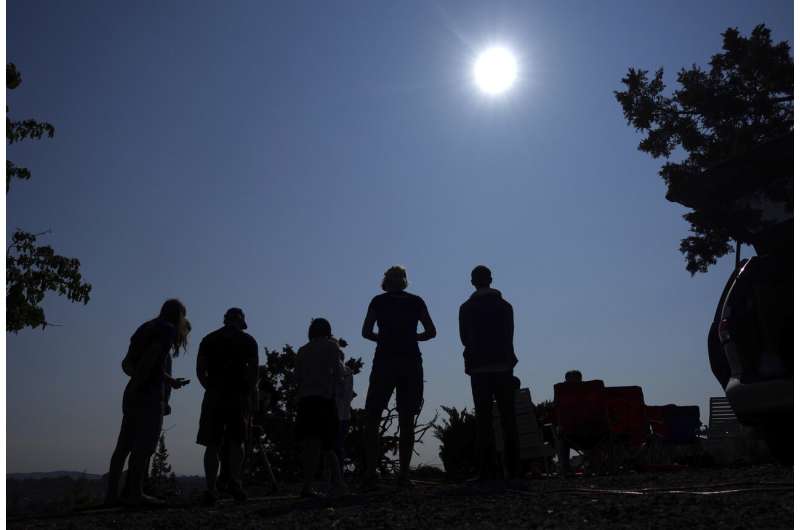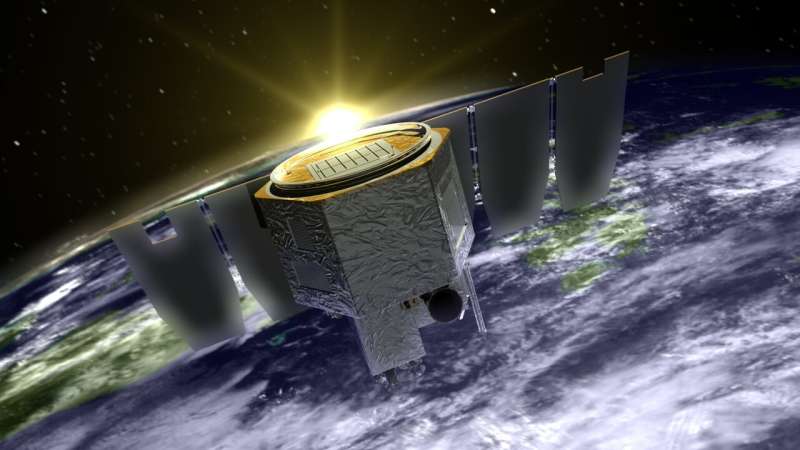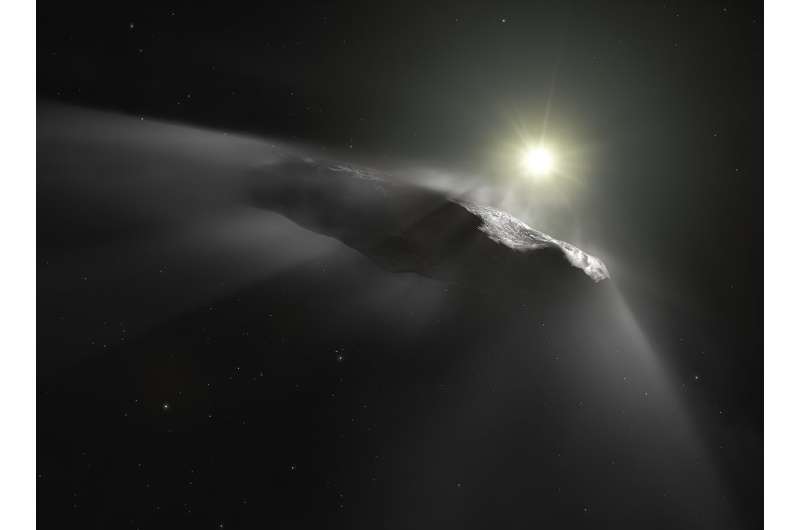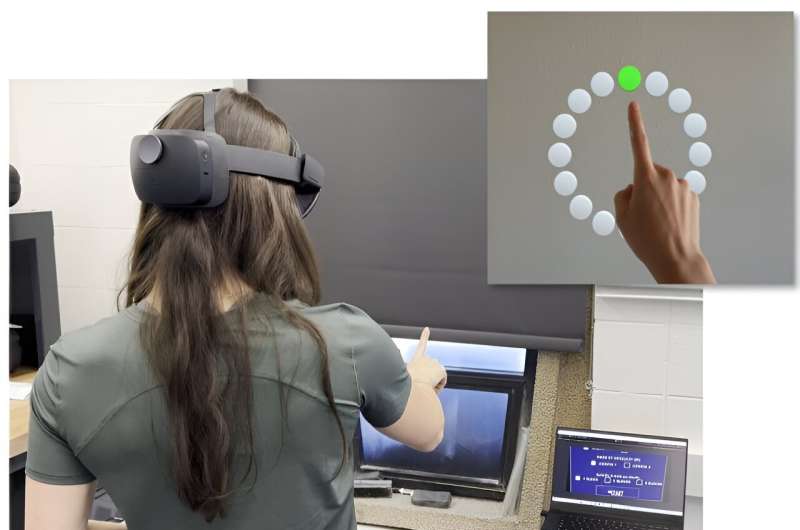Where will you be for the April 8 total solar eclipse? There's still time to grab a spot
Saturday, 02 March 2024 12:48
Boeing gets $439 million contract for U.S. military communications satellite
Friday, 01 March 2024 21:41

SSSIF 2024 draws record attendance as Europe's 'New Space' sector grows rapidly
Friday, 01 March 2024 19:24 The 5th edition of the Small Satellites and Services International Forum (SSSIF), held in Malaga, has marked a significant milestone in the 'New Space' industry, drawing an unprecedented number of over 400 experts from across the globe. This event, which has rapidly become Europe's premier forum for the small satellite sector, witnessed its largest attendance to date, with participants hailing f
The 5th edition of the Small Satellites and Services International Forum (SSSIF), held in Malaga, has marked a significant milestone in the 'New Space' industry, drawing an unprecedented number of over 400 experts from across the globe. This event, which has rapidly become Europe's premier forum for the small satellite sector, witnessed its largest attendance to date, with participants hailing f Night-shining cloud mission ends; yields high science results for NASA
Friday, 01 March 2024 16:18
After 16 years studying Earth's highest clouds for the benefit of humanity—polar mesospheric clouds—from its orbit some 350 miles above the ground, NASA's Aeronomy of Ice in the Mesosphere, or AIM, mission has come to an end.
Initially slated for a two-year mission, AIM was extended numerous times due to its high science return. While AIM has faced hurdles over the years—from software hiccups to hardware issues—an incredibly dedicated team kept the spacecraft running for much longer than anyone could have anticipated.
On March 13, 2023, the spacecraft's battery failed following several years of declining performance.
Lights out for wonky US lunar lander, for now
Friday, 01 March 2024 16:16 An uncrewed American lander that became the first private spaceship on the Moon sent its final image Thursday before its power banks depleted, the company that built it said.
Houston-based Intuitive Machines posted a picture that was captured by Odysseus on February 22, the day it touched down near the south pole.
But the image was only received Thursday. The company shared earlier that
An uncrewed American lander that became the first private spaceship on the Moon sent its final image Thursday before its power banks depleted, the company that built it said.
Houston-based Intuitive Machines posted a picture that was captured by Odysseus on February 22, the day it touched down near the south pole.
But the image was only received Thursday. The company shared earlier that Lockheed Martin advances in missile defense with key acquisition milestone
Friday, 01 March 2024 16:16 Lockheed Martin (NYSE: LMT) has marked a significant achievement in the development of the United States' missile defense capabilities, completing a pivotal acquisition milestone for the modernized long-range ballistic missile interceptor ahead of schedule. This milestone, known as the first Knowledge Point (KP1), represents a crucial step in the contractual process, allowing the company's Next
Lockheed Martin (NYSE: LMT) has marked a significant achievement in the development of the United States' missile defense capabilities, completing a pivotal acquisition milestone for the modernized long-range ballistic missile interceptor ahead of schedule. This milestone, known as the first Knowledge Point (KP1), represents a crucial step in the contractual process, allowing the company's Next Astro Chat with Marco Sieber | ESA Explores podcast
Friday, 01 March 2024 16:00 Video:
00:23:34
Video:
00:23:34
Marco Sieber is one of ESA’s five astronaut candidates currently undergoing basic astronaut training at the European Astronaut Centre (EAC) in Cologne. Join us as we speak to Marco about his first months of training and living in Germany, his background as a medical doctor, his favourite training lessons, and what he is excited about for the future of space exploration.
This is the third episode of our ESA Explores podcast series introducing the ESA astronaut class of 2022. It was recorded in November 2023.
Music and audio editing by Denzel Lorge. Cover art by Gaël Nadaud.
When an object like 'Oumuamua comes around again, we could be ready with an interstellar object explorer
Friday, 01 March 2024 15:38
On October 19th, 2017, astronomers with the Pann-STARRS survey observed an interstellar object passing through our system—1I/2017 U1 'Oumuamua. This was the first time an ISO was detected, confirming that such objects pass through the solar system regularly, as astronomers predicted decades prior. Just two years later, a second object was detected, the interstellar comet 2I/Borisov. Given 'Oumuamua's unusual nature (still a source of controversy) and the information ISOs could reveal about distant star systems, astronomers are keen to get a closer look at future visitors.
For instance, multiple proposals have been made for interceptor spacecraft that could catch up with future ISOs, study them, and even conduct a sample return (like the ESA's Comet Interceptor).
An augmented reality assessment designed to test astronaut adjustment to gravity changes
Friday, 01 March 2024 15:17
When shifting from the microgravity of a spacecraft to the gravity-rich environment of the moon or Mars, astronauts experience deficits in perceptual and motor functions. The vestibular system in the inner ear, which detects the position and movement of the head, must adjust to reinterpret new gravity cues.
A University of Michigan-led team, including researchers from the University of Colorado Boulder's Bioastronautics Lab and NASA's Neuroscience Lab at Johnson Space Center, developed a multidirectional tapping task administered in augmented reality (AR) to detect sensorimotor impairments similar to those observed in astronauts after spaceflight.
The results, published in Aerospace Medicine and Human Performance, could support mission operations decisions by establishing when astronauts are able to perform tasks that require full coordination, like piloting vehicles or operating other complex systems.
Field tests to assess sensorimotor impairment have previously been conducted upon the return of International Space Station crew members to Earth.
MSR problems illustrative of challenges for NASA flagship missions, audit concludes
Friday, 01 March 2024 12:01

China Reports Progress on Manned Lunar Program with Development of Key Technologies
Friday, 01 March 2024 11:17 The China Manned Space Agency (CMSA) recently provided an update on China's ongoing manned lunar exploration efforts, indicating steady progress toward achieving a manned moon landing before 2030. This ambitious goal is being pursued through the development of several critical technologies and spacecraft, marking significant steps in China's space exploration journey.
Central to these effo
The China Manned Space Agency (CMSA) recently provided an update on China's ongoing manned lunar exploration efforts, indicating steady progress toward achieving a manned moon landing before 2030. This ambitious goal is being pursued through the development of several critical technologies and spacecraft, marking significant steps in China's space exploration journey.
Central to these effo 








